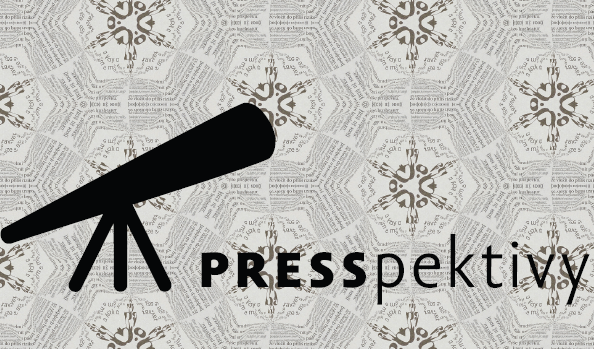Navigating public relations and communication to support environmental causes is fraught with challenges. These challenges often revolve around competing interests, where the resolution may hinge on a delicate balance between time constraints and the prioritization of environmental concerns.
EJO talked to PR and communications professionals from two distinct NGOs in Sweden, both with extensive interests in the environmental landscape. The interview centered on media reach, specifically delving into the types of coverage that may be lacking in the realms of environment, nature, animals, and climate.
These organizations are involved in PR and communications efforts, encompassing local and national news coverage and civic engagement.
The media coverage challenge
In response to inquiries regarding media coverage of environmental issues as a whole, Nina Schmieder, the press secretary at the World Wildlife Foundation (WWF) in Stockholm, remarks, „In my experience, journalists exhibit a genuine interest in climate-related questions and possess a comprehensive understanding of this subject. However, time constraints often hinder them from conducting the extensive coverage they aspire to in this domain.“
Schmieder has worked for WWF since 2018 and notes a marked difference in media coverage before and after the COVID-19 Pandemic in several of the daily news outlets in Swedish media.
On their interest in climate questions, she adds examples of media before/after the COVID-19 Pandemic: “DN commissioned a climate news desk with more than five reporters. Expressen started a climate group. SVT recruited more science/climate reporters, as did TV4 and other newspapers. Then came the Pandemic, and most of the climate reporters got jobs to cover it. To make matters worse, media houses have had to pull back on their total number of reporters in recent years.”
Dagens Nyheter (DN) is a nationwide, independent liberal daily morning newspaper. Expressen is a nationwide, independent, liberal daily evening newspaper. SVT (Sveriges Television) is a Swedish national public television broadcaster. TV4 is the largest commercial television channel in Sweden.
Interests on nature
EJO asked Magnus Orrebrant, a press officer and president of The Swedish Carnivore Association (SCA), what areas he would like more media coverage on and how media coverage on the environment is generally characterized. He explains that while they frequently seek media work for the SCA, much of the existing coverage focuses on anthropocentric perspectives and how humans dominate interests in nature.
For example, Orrebrant says the media rarely discusses how humans might adjust their practices to protect nature. From the perspective of SCA, he explains that such media coverage of top predators hardly ever focuses on biodiversity.
“If 300,000 sheep die for the food industry in Sweden, it is still the 200-300 sheep that die from wolf attacks that receive more attention,” he says.
When querying the NGO press officers about the media’s comprehensive coverage of the environment, Orrebrant expressed the desire for increased attention to the absence of balanced perspectives on nature. SCA advocates for broader media coverage beyond human interests, highlighting the need for a more inclusive portrayal of environmental issues.
To illustrate this point, Orrebrant highlighted the emotional intelligence of pigs, suggesting that the disparities in how we perceive and relate to various animals warrant more comprehensive coverage and exploration.
Schmieder presents an additional illustration of the diverse concerns within the realm of nature, seemingly lacking a broader political agenda.
“I find it hard to understand that mono-cultured pine forests are important to protect. I wish it were easier to garner consumers‘ attention on the impact of forestry globally but also in Sweden,” she says.
According to Schmieder, cultivating broader environmental interests involves recognizing and addressing existing global disparities and gaps.
A broad platform
The practitioners that EJO interviewed for this article work for member-based NGOs and civil society organizations, supporting broader interests in environmental topics.
Their most recent annual reports (WWF Sweden, 2022; SCA Sweden, 2022) encompass a blend of sustained, comprehensive strategic communications and press relations.
This entails active involvement with local media, forming media partnerships, and organizing dedicated events to engage a diverse and widespread audience effectively. For example, social media is a complement, a part of the communications plan, and a key to civic engagement.
The reports assert continued strategic communication on behalf of the environment. In asking what the success behind their organization’s media work may be, Schmieder explains how, along with comprehensive press relations and branding, WWF also advises and shares its databases on visual materials with media houses.
“We have between 6,000 and 8,000 press clips per year. Only The Swedish Society for Nature Conservation (SSNC) can beat this among the different environmental organizations in Sweden,” says Schmieder.
“Also, WWF has a comprehensive photo and video archive, from which we offer material to news desks and journalists, and it is appreciated,” she adds.
Although these organizations garner attention for their communication efforts concerning broader environmental interests, environmental news and encompassing environmental concerns face challenges in securing increased media coverage. Schmieder and Orrebrant both emphasize the necessity for more general discussions on environmental topics to amplify complex and competing interests in nature.
Tags:anthropocentric, environment, mediacoverage, nature, NGO, pressrelations, Sweden














